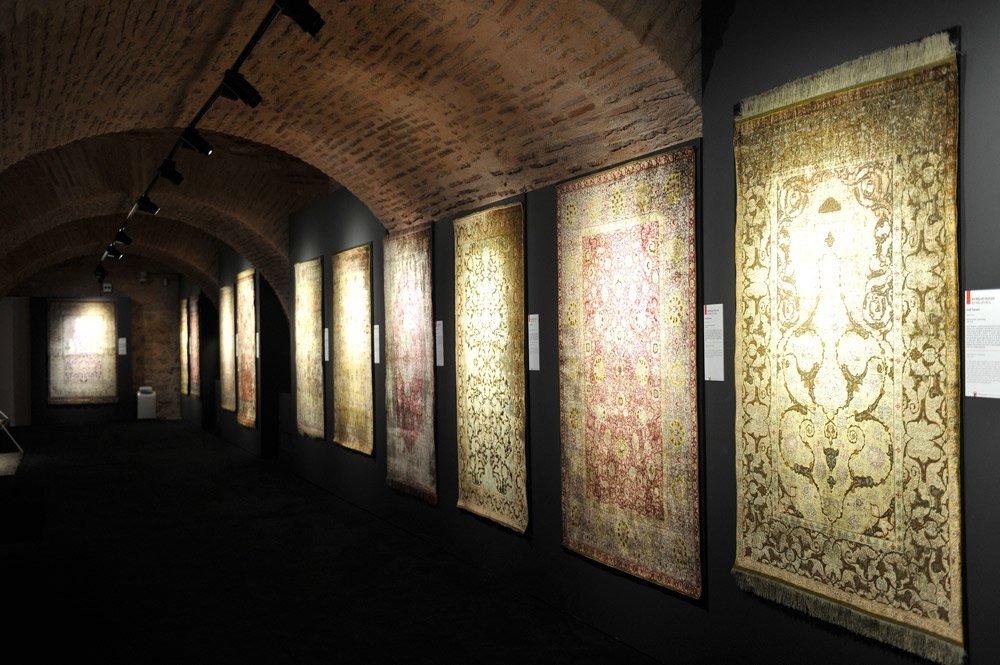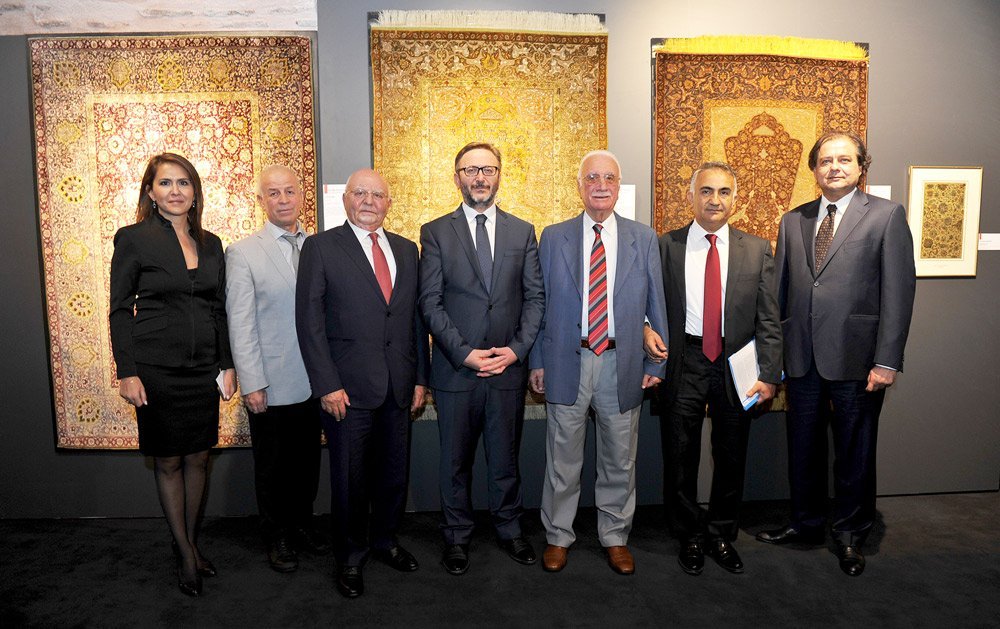Rare Kumkapi rugs from the Arkas Collection are making their Istanbul debut at Museum of Turkish and Islamic Arts. The exhibition ‘Kumkapi Rugs from the Arkas Collection’, held as part of the 2nd annual Istanbul Carpet Week organised by Istanbul Carpet Exporters’ Association, opened on 5th October.
Istanbul Carpet Week, held for the second time by Istanbul Carpet Exporters’ Association on 1-5th October, is hosting Kumkapi Rugs from the Arkas Collection Exhibition. Arkas Carpet Collection, comprising of two main themes, Anatolian and Ottoman Rugs from a period ranging from the 15th to the 20th centuries, is among the most important rug collections in the world. The exhibition brings into light for the first time the examples of the very rare silk Kumkapi rugs from the collection. Open at the Museum of Turkish and Islamic Arts in Istanbul, the exhibition welcomes visitors to feast their eyes on the largest Kumkapi rug collection in the world.
TWO IMPORTANT EXHIBITIONS AT A TIME
The Museum of Turkish and Islamic Arts boasts the world’s most precious carpet collection, compiled from close to 1700 rare carpets/rugs collected from mosques, shrines, and other sacred places across Anatolia, or purchased at times. Therefore the museum has come to be known in foreign publications as a “carpet museum”. Arkas Carpet Collection, on the other hand, is comprising of the examples from the period between 16th and 20th centuries and considered to be among the most important carpet collections worldwide.
The exhibition presents to art lovers 32 of the finest examples of Kumkapi rugs, woven by the pioneering masters including Agop Kapucyan, Zareh Penyamin, Tosunyan and Garabed Apelyan. Some recently restored rugs too are displayed for the first time simultaneously with “Kumkapi Rugs from the Arkas Collection” at the Museum of Turkish and Islamic Arts. Therefore, this exibition which brings together these two remarkable collections, the Collection of Museum of Turkish and Islamic Arts and the Arkas Collection, is a must see for those who take interest in the art of carpet weaving.
TRIBUTE TO TURKISH CARPET WEAVING AT THE OPENING
Arkas Holding President Lucien Arkas having given a speech at the opening of the highly anticipated exhibiton, reminded that Carpet weaving, a tradition shaped in thousands of years, is among Turkey’s most important cultural heritages, Arkas emphasised the need for the preservation of this ancient art, remarking “By presenting the Arkas Carpet Collection to art lovers, we aim to contribute to the proper appreciaton of these rare pieces, providing resource for new scientific research, and bring carpet weaving back to its heyday.”
IHIB President Ugur Uysal also took to the stage and said “Thanks to this exciting occasion, we are preserving our cultural heritage while also presenting the best collections to carpet enthusiasts. We would like to express our graditute to Mr. Lucien Arkas for sharing this valuable collection with us.” Seracetin Sahin, Director of Museum of Turkish and Islamic Arts informed the visitors on the art of Turkish carpet weaving. “The museum, which was named the Museum of Turkish and Islamic Arts after the advent of the republic, has been here in the Ibrahim Pasa Palace since 1983. Close to 1700 carpets and praying rugs, collected from mosques, shrines, and other sacred places across Anatolia, or purchased at times, have constituted the world’s most valuable carpet collection, therefore leading to the museum’s referral as a ‘carpet museum’ in foreign publications. The Ottoman Carpets Exhibition, displayed in collaboration with IHIB as part of the Istanbul Carpet Week in the Divanhane section of our museum, comprises of 21 pieces, carpets and rugs from the 15-17th century. In addition to the Saph praying rugs (communal) from the Ladik and Transylvania regions, the exhibition features carpets. Among the carpets exhibited are examples from the Usak, Central Anatolia and Konya regions, decorated with depictions of the Ka’bah and mihrab, as well as the pieces exported to the West and came to known by the names of the European painters such as Lotto, Holbein, Crivelli and Belini, who depicted them in their works. This remarkable, worth-to-see exhibition has become a permanent collection for our museum”, said Seracetin Sahin, Director of Museum of Turkish and Islamic Arts.
THE SECRET OF KUMKAPI RUGS
Beginning with the 1950s, Kumkapi carpets have frequently appeared in auctions abroad, creating a significant market and becoming renowned for their superior qualities. A considerable number of these carpets are included in museums and private collections in Europe and the United States. The most important characteristic of these private enterprise-production rugs is that they preserve the style of Ottoman court carpets. Among the examples, these rugs are very similar to 16th century magnificent Ottoman rugs and there are also others in Persian style, depicting naturalistic animal figures in miniature-like manner. There are two types of Kumkapi rugs woven with Gordes knot: large rugs with infinitely repeating decorations, and prayer rugs, which feature various mihrab forms.
Persian and Ottoman influences dominate Kumkapi rug designs. Products of Persian influence depict naturalistic animal figures among Hatayi ornaments. The ones that reflect the classical era Ottoman court style are mostly decorated in the “Saz Yolu” manner. The reason behind this preference is the fact that carpet designers of Kumkapi are inspired by older rugs and prefer to create designs that are variations of the old designs. Another factor which shaped their style was the market demand, as well as the conditions of the era. Kumkapi rugs attain variation through a selection from a rich palette of designs. Use of silver thread being the most significant feature of these rugs, when combined with silver, it allows the formation of different levels on the surface.
In consideration of Turkey’s position as the cradle of civilisations, who contributed greatly to carpet weaving tradition, we can say that the ‘Kumkapi Rugs from the Arkas Collection’ exhibition plays an important role in perpetuation of this craft, which is under the threat of sinking into oblivion.





